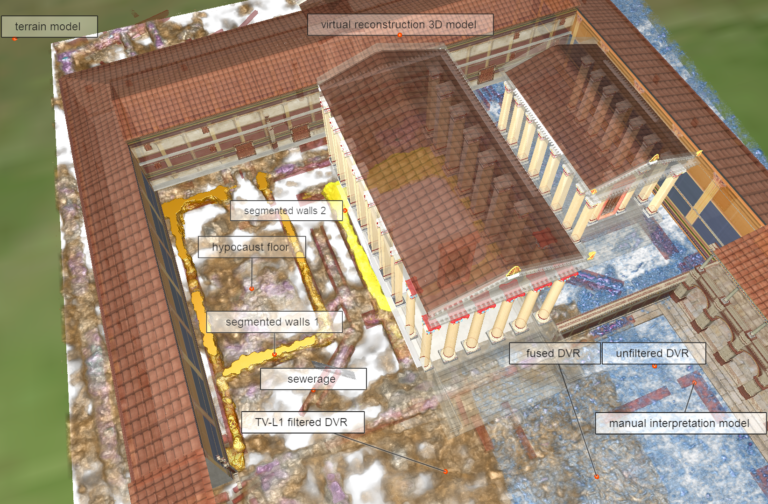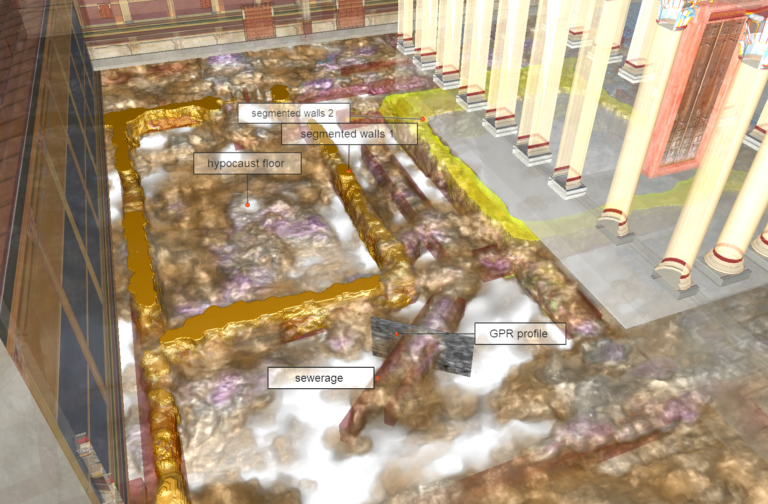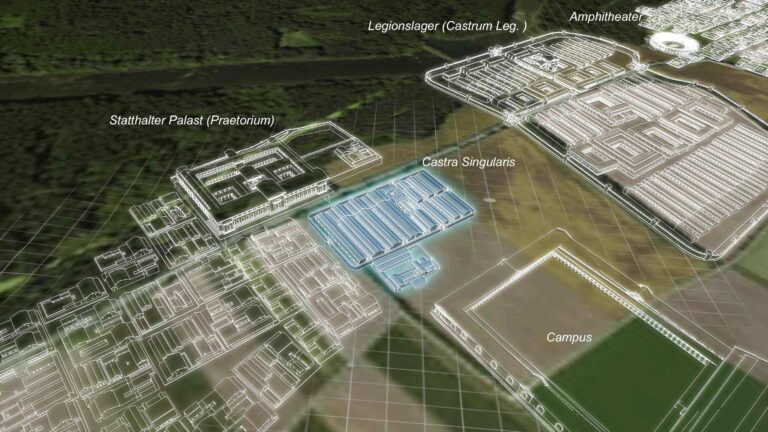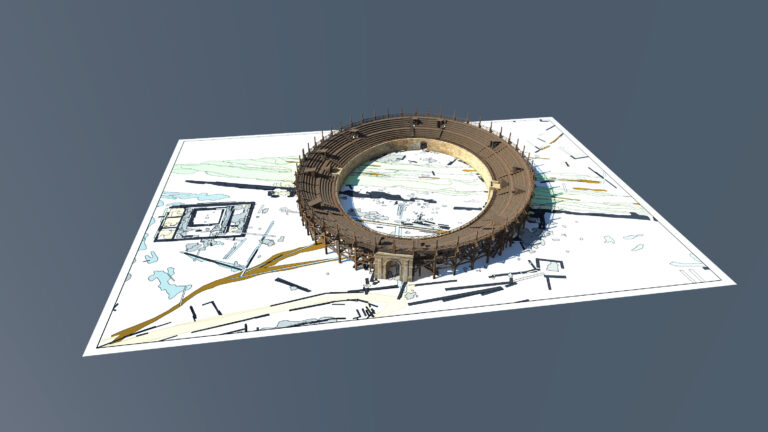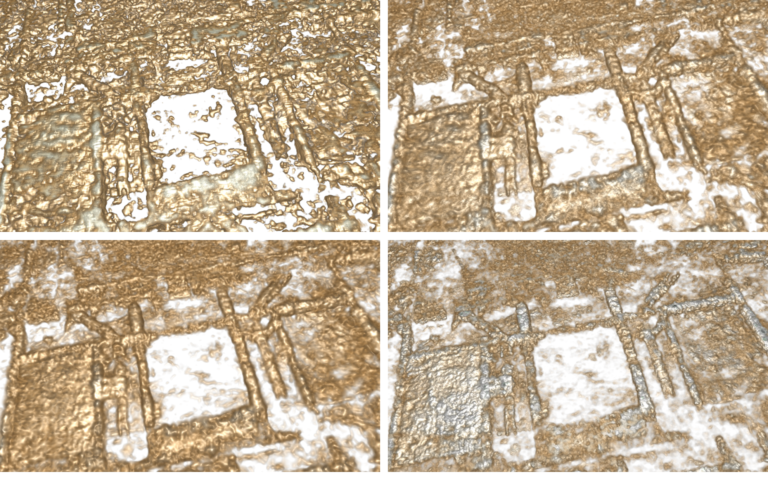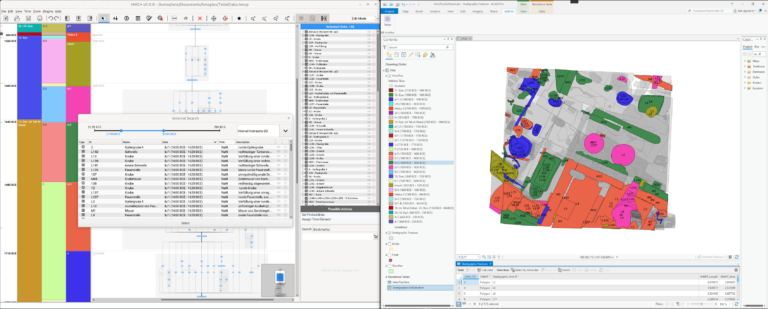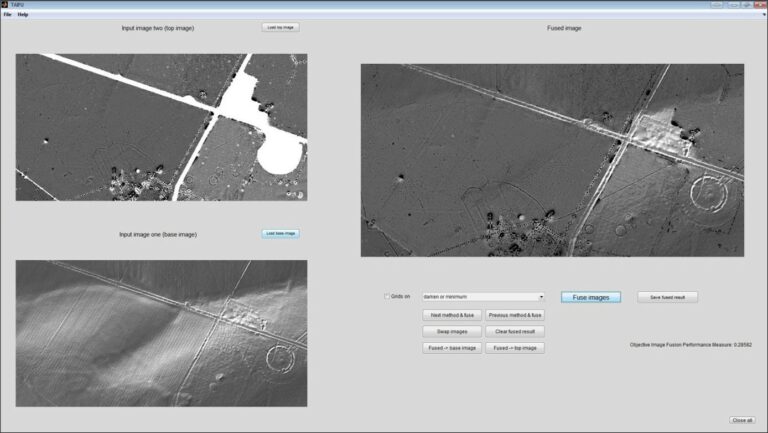Virtual Archaeology
Exploring archaeological landscapes in virtual space
The physical act of excavating buried archaeological stratigraphy inevitably includes the destruction of the archaeological site. Non-invasive archaeological prospection transfers these physical interactions into an abstract space where researchers can virtually explore the digital data on computer, making use of advanced data visualizations and algorithms.
The main focus within Virtual Archaeology is on the development and application of virtual reality tools and respective interfaces for visualization and interacting with the integrated 3D surface and volumetric prospection datasets in a virtual data visualization space to extract archaeologically relevant facts. Through integration and fusion of different data sets as well as the adaptation of imaging algorithms from the sphere of medical imaging, considerably more information will be retrieved from the prospection data.
A key to enabling such exciting virtual digs lies in making the tools fit seamlessly into the scientific workflow developed for the integrated archaeological analysis and interpretation of prospection data and allow intuitive interaction in 3D and 4D. Within a virtual space it becomes possible to interact with the data more effectively to derive relevant archaeological facts and contexts. VR devices giving access to a group of experts are used to enhance the discussion within the interpretation team and decision makers. Such functionality in hard- and software provides the perfect environment for integrated interpretation by various experts within the LBI ArchPro partner consortium.


